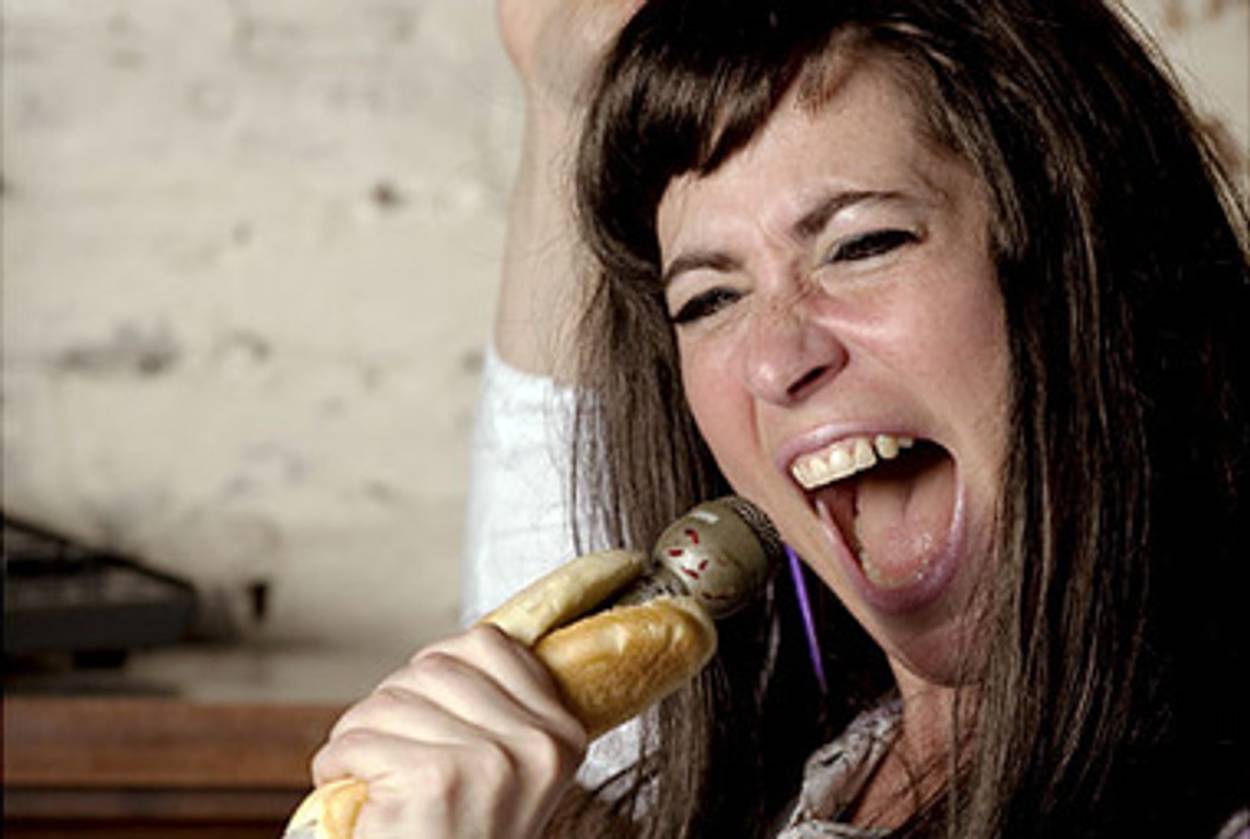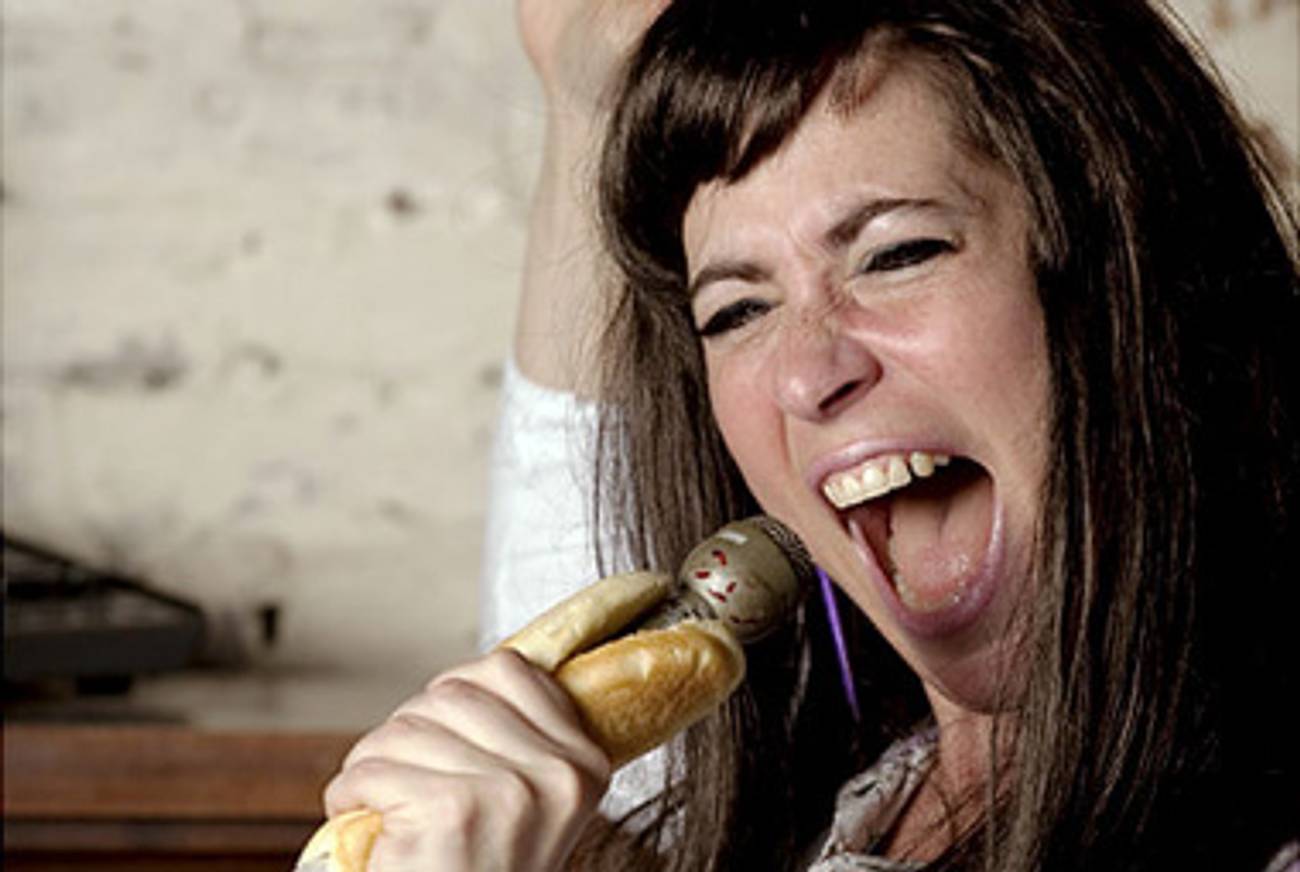Lapsed Orthodox Singer Plays One In Her Show
Coming to the Fringe Festival




Tomorrow, the New York International Fringe Festival launches its annual two-week multi-arts extravaganza, with more than 200 theater and dance companies from all over the world. As usual, there are plenty of Jewish-related highlights, including a Yiddish-language theatrical adaptation of I.L. Peretz’s A Gilgl Fun a Nigun, a musical comedy/tragedy about children’s television in Gaza, and a play about a friendship between two girls, one black, the other Jewish, in post-apartheid South Africa, written by the granddaughter of Mandela’s great defense attorney, Israel Maisels.
One offering that caught our eye (or, rather, ear) is Feed the Monster, Stephanie Ehrlich’s one-woman musical about an Orthodox Jew from Brooklyn who, in the 1960s, launches a career as a rock star with this funky hit:
Ehrlich is also a formerly Orthodox Jew from Brooklyn, though, according to her, the similarities stop there. We tracked her down to find out more about the play.
Feed the Monster is a musical, one-woman show. Is it cabaret-style, or is there a narrative?
Oh, there’s definitely a story. It’s about this aging rocker, Rita Emerson, circa 1985, and she’s looking back at her heyday in the Sixties. She’s a nice Jewish girl, grew up in an Orthodox family in Brooklyn, and then became a rock star overnight. Then her star falls, and she’s trying to get it back, and she does get it back. She ends up back in Brooklyn, becoming a Jewish gospel singer.
How did this play come about?
I started to sing around 39. I saw my 40th birthday coming, and I thought, “Oh my god, I have to do something. I want to be a rock star! But I can’t be a rock star.” So I wrote a show about being a rock star.
You grew up in an Orthodox family, in the Syrian Jewish community in Brooklyn. Did you like singing back then?
I went to yeshiva, and I didn’t think of this consciously until recently, but there was this hippy-dippy music teacher who was so different from all the other teachers. Most teachers were male, rabbis. All the women teachers were very religious. They wore wigs, and were all covered up. But this woman was wearing jeans and madras shirts, and at least had the appearance of being braless—this was the early Seventies. She had us singing Joni Mitchell, The Band: I remember singing, “paved paradise, put up a parking lot.” I have very clear memories of singing these songs with all the yeshiva kids. I think she must’ve made a very strong impression on me.
What does Rita wear as a Jewish gospel singer?
She’s wearing sort of a choir robe. It’s blue and silver. What I had in my mind is what the Kohens, the high priests, wore, that was my original thinking, like a Kohen prayer apron. But when she turns around, on the back, there’s a hamsa with a Magen David on it in rhinestone, so it’s fabulous. I’m going to do a full turn-around at the end—very Neil Diamond in Coming to America, very Jazz Singer.
Julie Subrin is Tablet Magazine’s executive producer for audio.